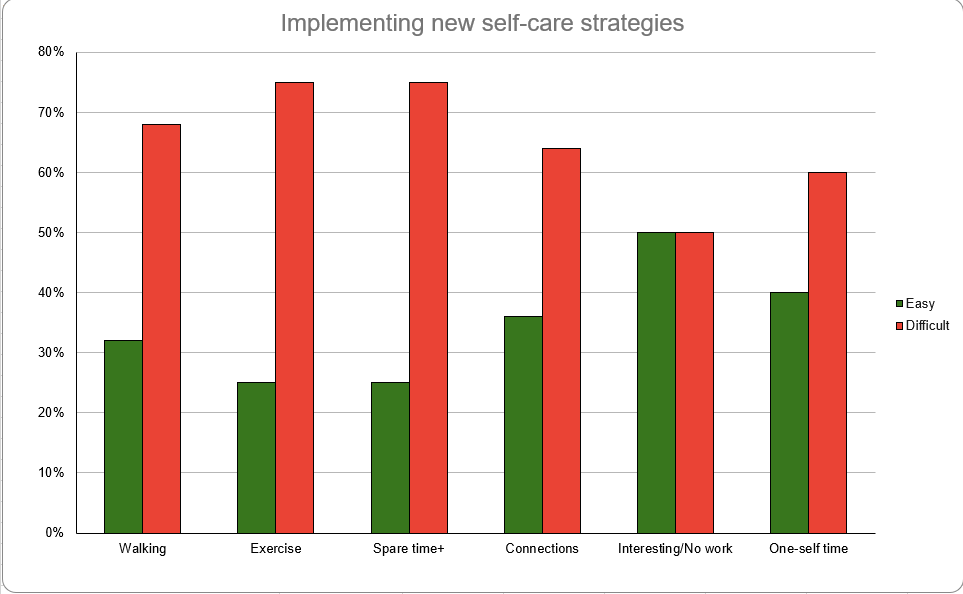Teacher self-care strategies: exploring teachers’ responses in Perú

Iván Aguilar (Perú) shares research gathered with approximately 70 teachers that includes their current and new self-care strategies
“Adaptability is the simple secret to survival” –Jessica Hagedorn
It’s been more than a year now since the pandemic hit the world and, consequently, many aspects of our lives and work. Teachers felt this shock tremendously since their styles of teaching and interacting with their students moved to the not very well-known area of online teaching.
Teachers may have perceived themselves as victims of a completely new and tense situation in which their major concern was the effectiveness of their lessons. Working from home also brought its own challenges such as not having a private space to work or dealing daily with the limitations of quarantine.
This crisis increased the amount of stress that teachers experience affecting their well-being in different areas and causing a variety of symptoms. However, adaptation is inherent to humans and the teachers’ initial view of themselves as victims turned into discovery of strategies to deal with the crisis and develop a personal and original approach to self-care. The most evident proof of this is that the educational system, with its new limitations, did not stop. The way this adaptation naturally happened at a binational center in Perú is what I will discuss in this article. I have been working at ICPNA Region Centro in Perú for many years and perceived these changes and adaptation in myself and my colleagues. This is what I will discuss in this article.
Binational center: ICPNA Región Centro
ICPNA Region Centro is a binational center located in the center of Perú in a city called Huancayo. There are approximately 69 teachers who are in charge of teaching English in the language program. The program consists of three main levels (basic, Intermediate, and advanced) as well as a six-month Methodology course. Teachers also come from varied educational backgrounds and have different numbers of years of experience. During the first months of the pandemic all the language program was moved to an online format and has been working this way for more than a year now.
Collecting information
During the first months of the pandemic, I was looking for ideas on how to take care of myself as a teacher and had the chance to read “The Teacher Self-Care Manual” by Patrice Palmer. After implementing some of the strategies described in the book, I wanted to know what my colleagues had been doing to deal with this difficult situation. This is why a short survey was prepared which included some of the most relevant concepts and strategies presented in the book. The survey explored what strategies teachers were currently using and which ones are more difficult for them to implement. The following sections present our findings.
Strategies currently used
Our first insights about self-care strategies commonly used by teachers is shown in the following graphic. It’s interesting to see that preventive healthcare and doing activities different from work are the two strategies with the highest rating.
- Teachers praising themselves for the good work they do appears to be a strategy used less often. This is probably due to the fact that teachers tend to lose sight of how valuable their job is.
- A similar tendency is observed with the possibility for teachers to take breaks during a workday. This is understandable as teachers’ workloads have increased and probably combined with the different demands imposed by the work done at home now.
- Staying in contact with significant others seems to be hard for teachers.
- It is a more worrying situation to find that at least half of the teachers do not eat their meals at regular times. We all know the consequences of this habit, so teachers should do their best to change it.

Abbreviations
- Eating meals regularly=Regular meals
- Praising themselves for good work=Praise good W
- Taking breaks during a workday=Taking breaks
- Seeing the doctor for preventative care=Preventative care
- Doing something interesting unrelated to work=Interesting/No work
- Staying in contact with important others=Staying in contact
Implementing new strategies
When asked about the possibility of implementing new self-care strategies, teachers responded as follows:
- Half of the teachers pointed out that doing things differently from work was the strategy they are more likely to use more often.
- Many spent time alone and wanted more time for connection with significant others.
- Exercising and walking seem to be strategies that most teachers feel are difficult to try and use. There might be several reasons for this to happen such as not having enough time, not finding a good place for physical activity, and a lack of the habit developed. These two strategies are crucial since they enable teachers to balance their physical and mental well being.
- Getting more spare time is also difficult for teachers. This is quite understandable since teachers, as we pointed out, have heavy workloads.

Abbreviations
- Walk for relaxation=Walking
- Getting more exercise=Exercise
- Getting more spare time=Spare time+
- Getting connection with important others=Connections
- Doing something interesting unrelated to work=Interesting/No work
- Spend time with one-self=One-self time
To sum up
It has been found that doing something interesting unrelated to work is the self-care strategy teachers use most often. It is also the strategy they seem to be more likely to implement more often compared to the other strategies suggested. Then we could say that the key word to help teachers deal with the current conditions they are living at our binational center is “variety.” Additionally we can state that:
- Physical activities are seen as difficult to access, so it’s necessary for the school leaders and head teachers of all organizations to develop simple but usable strategies for teachers to work on these aspects.
- Balanced diets would also be of great help for teachers, thus having some guidance though workshops or other media would be very interesting and useful to implement.
As we have seen, teachers’ voices are not the ones of being simple victims. On the contrary, they are aware of the importance of self-care and are currently taking actions to keep themselves well. Like all teachers around the world, I’m sure they love their profession, but also understand that , as human beings, they need “variety in their lives” to express their completeness and infiniteness.
